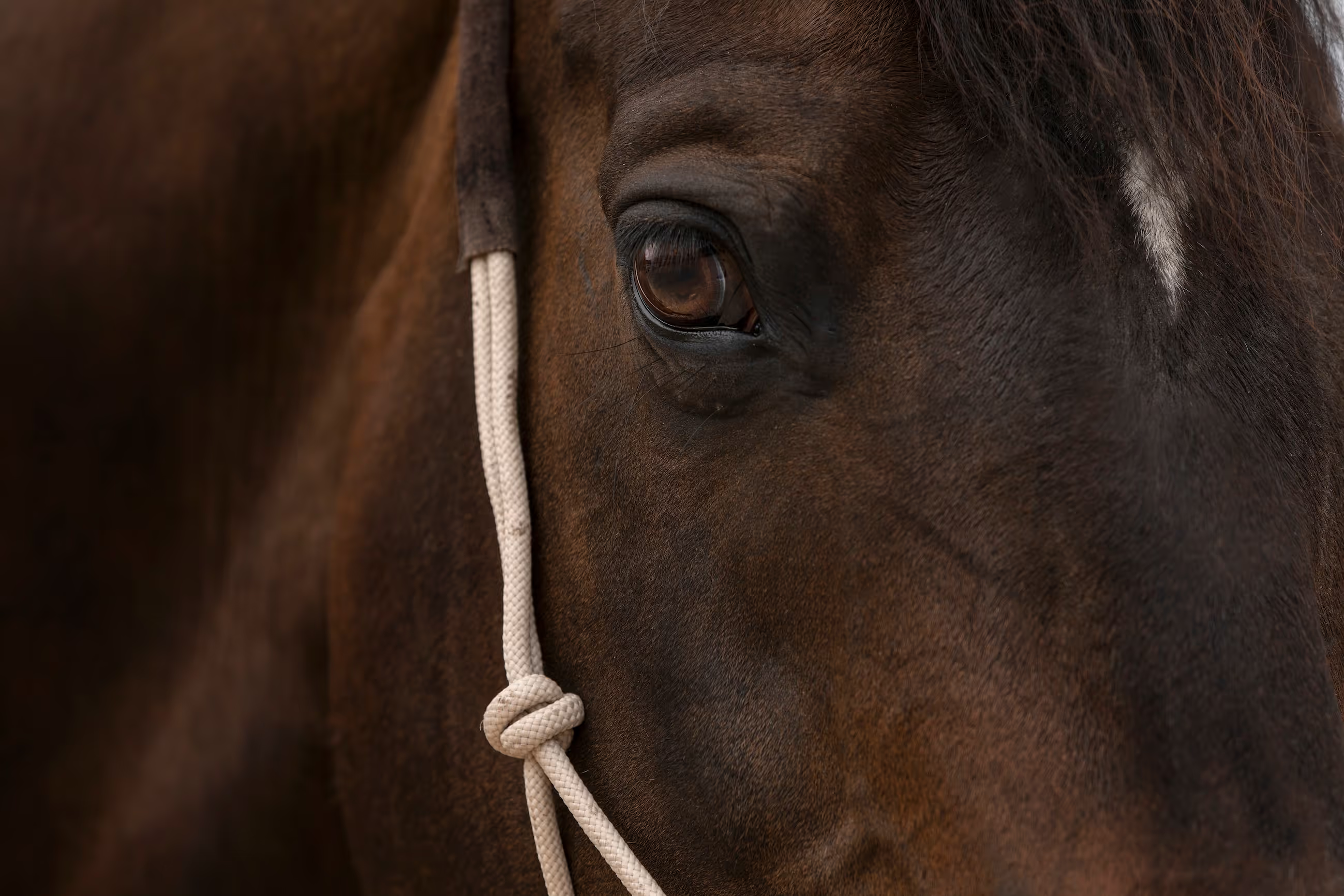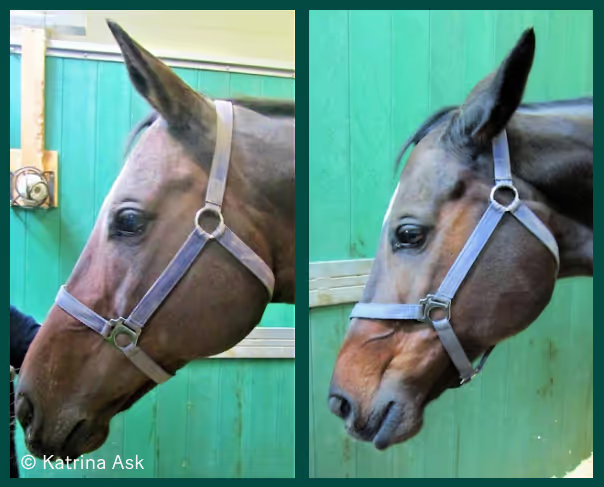
3 April 2024
Technically, we’re observing the horse’s motion, specifically changes in upper-body movement as a result of asymmetrical movement patterns. From a biological point of view, however, we want to know if the horse is in pain or not.
Early applications of objective gait analysis established specific thresholds, where values above a certain point would indicate significant lameness [1]. However, studies applying these thresholds to sound horses, show that over 70% of them exhibited asymmetries above what would typically be considered indicative of clinical lameness if assessed by a veterinarian [2]. This raises a fundamental question: what is causing these asymmetries? Is it pain, or could there be other factors at play? While we lack a definitive answer to this question, it seems unlikely that all these horses are in pain. This example highlights the intricate challenge of determining whether a horse is experiencing pain.
Pain is a complex physiological system that involves various interconnected components across fields like physiology, neurology, and behavioural sciences. The concept of pain can be broadly divided into two components: nociception and perception.
Nociception refers to the signal of pain that originates in the tissue. Nerves transmit this signal through the spinal cord, to the brain. Perception, on the other hand, occurs in the brain itself. The brain interprets the nociceptive information and activates behavioural and physiological responses while also influencing how the pain is experienced. In the context of orthopaedic pain in horses, examples of nociceptive input include inflammation in a joint, traumatic injuries, or actual nerve damage.
The subsequent adaptation of movement patterns by the horse to alleviate pain is often observed as lameness. Lameness is a behavioural modification, serving as a sign that the brain has processed the nociceptive information and initiated a response. However, these responses may be subtle and not as overt as lameness. Often, humans may sense that "something" is wrong but find it challenging to pinpoint exactly what.
In recent years, the term "the equine pain face" [3] has gained prominence, prompting investigations into facial expressions as a potential response to pain. The concept is not new. As early as 1868, a French researcher called Duchenne demonstrated that facial muscles could be contracted without the involvement of emotions [4]. Similarly, patients with partial facial paralysis, unable to voluntarily contract facial muscles, have shown the ability to smile in response to emotional stimuli. People with partial face paralysis were able to smile when it was genuinely funny, suggesting that facial expressions might offer insights into emotions. This likely applies to animals as well [5], which has prompted a lot of research into the question: could facial expressions be a genuine expression of pain in horses? It might be the case, our research group has found changes in facial expressions due to orthopaedic pain [6].
In humans, where most individuals can communicate their own pain experience, the use of grimaces as indicators of pain began with patients who lacked this ability: infants. As it turns out, morphological changes of the face in pain are remarkably similar between species [7]. Behaviours, and especially facial expressions thus started to take more place in the clinical assessment. The facial cues of a horse in pain involve tense facial muscles, slightly backwards facing ears, dilated nostrils and a small wrinkle above the upper eyelid. Multiple independent studies have reached similar conclusions [8–10], suggesting pain will trigger these facial changes.
However, the presence of behavioural changes or changes in facial expressions does not always indicate pain. Think back to the example of the lame horse. If we were to measure asymmetries in the horse’s movement, without considering the nociceptive input, there could be reasons for the asymmetrical movement pattern other than lameness. To determine whether it is a lameness, veterinarians consider factors such as the horse’s normal movement pattern (if measured earlier), palpation findings, medical history and responses to blocking the lameness (called an analgesic test).
Similarly, changes in behaviours and facial expressions can be influenced by various factors. For example, research has shown that the mere presence of humans caused horses in hospitals to hide signs of pain. The observer did not even have to interact with the horse, presence in the stable was enough. [11].
Furthermore, as mentioned earlier, pain is complex and linked to several other body systems. Both facial expressions [12] and behaviours [13] observed during stressful situations without pain, share similarities with those seen in situations of known pain. While pain in itself can induce stress in a horse, it’s important to recognize that stress can be induced by factors other than pain, such as communicative issues with the rider, handling difficulties or problems with the saddle.
In conclusion, facial expressions and behaviours are highly individual and multimodal approaches are currently the best way to recognize and prevent pain. While I am confident that knowledgeable veterinarians have a good capacity to recognize pain, it’s crucial to approach it with careful consideration, as there’s still much about pain that remains unknown.

The author of this blog Dr Johan Lundblad is defending his thesis “Exploring facial expressions in horses” in June 2024
-------------------------------------------------------------------------------------------------------------------
[1] Keegan KG, Yonezawa Y, Pai PF, Wilson DA, Kramer J. Evaluation of a sensor-based system of motion analysis for detection and quantification of forelimb and hind limb lameness in horses. Am J Vet Res. 2004;65: 665–670.
[2] Rhodin M, Egenvall A, Haubro Andersen P, Pfau T. Head and pelvic movement asymmetries at trot in riding horses in training and perceived as free from lameness by the owner. Loor JJ, editor. PLOS ONE. 2017;12: e0176253.
[3] Gleerup KB, Forkman B, Lindegaard C, Andersen PH. An equine pain face. Vet Anaesth Analg. 2015;42: 103–114.
[4] Augustine GJ, Groh JM, Huettel SA, LaMantia A-S, White LE. Neuroscience. Sevent edition. New York, NY, US: Oxford University Press; 2024.
[5] Descovich KA, Wathan J, Leach MC, Buchanan-Smith HM, Flecknell P, Farningham D, et al. Facial expression: An under-utilized tool for the assessment of welfare in mammals. Altex. 2017;34: 409–429.
[6] Ask K, Rhodin M, Rashid-Engström M, Hernlund E, Andersen PH. Changes in the equine facial repertoire during different orthopedic pain intensities. Sci Rep. 2024;14: 129.
[7] Chambers CT, Mogil JS. Ontogeny and phylogeny of facial expression of pain. Pain. 2015;156: 798–799.
[8] van Loon JPAM, Van Dierendonck MC. Monitoring acute equine visceral pain with the Equine Utrecht University Scale for Composite Pain Assessment (EQUUS-COMPASS) and the Equine Utrecht University Scale for Facial Assessment of Pain (EQUUS-FAP): A scale-construction study. Vet J. 2015.
[9] Dalla Costa E, Minero M, Lebelt D, Stucke D, Canali E, Leach MC. Development of the Horse Grimace Scale (HGS) as a pain assessment tool in horses undergoing routine castration. PLoS ONE. 2014;9: 1–10.
[10] Rashid M, Silventoinen A, Gleerup KB, Andersen PH. Equine Facial Action Coding System for determination of pain-related facial responses in videos of horses. PLOS ONE. 2020;15: e0231608.
[11] Torcivia C, Mcdonnell S. In-Person Caretaker Visits Disrupt Ongoing Discomfort Behavior in Hospitalized Equine Orthopedic Surgical Patients. Animals. 2020;10.
[12] Lundblad J, Rashid M, Rhodin M, Andersen PH. Effect of transportation and social isolation on facial expressions of healthy horses. PLOS ONE. 2021;16: e0241532.
[13] Young T, Creighton E, Smith T, Hosie C. A novel scale of behavioural indicators of stress for use with domestic horses. Appl Anim Behav Sci. 2012;140: 33–43.